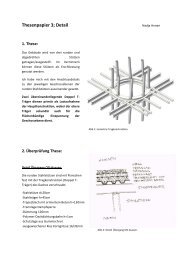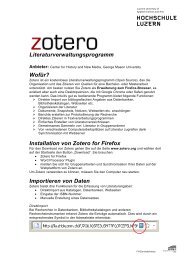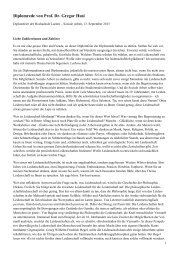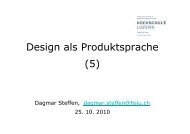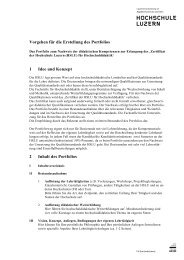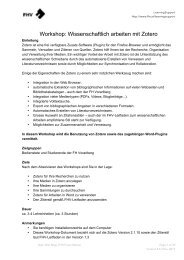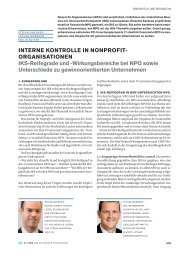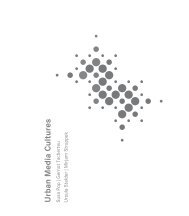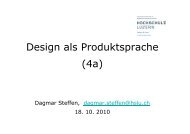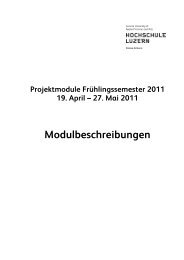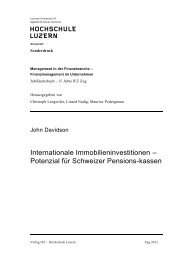Designwissenschaft und Designforschung: Ein einführender Überblick
Designwissenschaft und Designforschung: Ein einführender Überblick
Designwissenschaft und Designforschung: Ein einführender Überblick
Sie wollen auch ein ePaper? Erhöhen Sie die Reichweite Ihrer Titel.
YUMPU macht aus Druck-PDFs automatisch weboptimierte ePaper, die Google liebt.
Issues � <strong>Designforschung</strong> � <strong>Designforschung</strong> <strong>und</strong> Designpraxis<br />
ture have many differences but all share a tradition of<br />
situating learning and scholarship in a professional practice<br />
setting. «Practice-led research» can be thought of as<br />
a natural extension of this principle since many academics<br />
in these fields see practice as the natural arena for inquiry<br />
and the methods of practice as methods of inquiry.<br />
The expression, «practice-led», does not describe a single<br />
set of ideas about research. Its meaning varies with<br />
discipline, location and person and it varies with the<br />
questions that are investigated. Its value is to indicate<br />
research practices, emerging from Art, Design &<br />
Architecture (ADA) and other creative disciplines, that<br />
complement methods of inquiry adopted from the<br />
humanities and sciences. In time, as those practices<br />
become more widely <strong>und</strong>erstood and established, that<br />
labelling function may become red<strong>und</strong>ant. Because of<br />
this fluidity, this review has not been restricted to a<br />
particular sub-set of the research in our disciplines.<br />
There are few areas where practice does not have some<br />
part to play in methods of inquiry and relatively few<br />
inquiries by «practitioner» academics that do not employ<br />
or investigate some aspect of practice. In some respects,<br />
therefore, this review examines all research in our<br />
disciplines, although it attends mainly to the questions<br />
that arise from the emergence of practice-led research.<br />
However there are some vexatious questions about<br />
the nature of practice-led research which are evident<br />
particularly in Fine Art, although they are relevant to<br />
all disciplines. In 4.4 we have isolated an important<br />
issue, the nature of outcome or contribution in some<br />
work that leans heavily of creative practice, and discussed<br />
how methods and practices might be developed<br />
in response.<br />
Defining Practice-led Research<br />
We have not identified any established or accepted prior<br />
definition of practice-led research. Many commentators<br />
point to the difficulty of defining it (1) and some,<br />
including AHRC, set out some conditions to be met by<br />
practice-led research (2) without attempting a definition.<br />
Where we have encountered confident assertions<br />
of the nature of practice-led research these have often<br />
been quite specialised, describing only a part of the<br />
42<br />
spectrum of work that we have observed across ADA.<br />
Given this lack, and given the wide scope of the topic<br />
that we have indicated above, we have adopted a basic<br />
definition which says little but is inclusive and does set<br />
a bo<strong>und</strong>ary, albeit a wide one: Research in which the<br />
professional and/or creative practices of art, design or<br />
architecture play an instrumental part in an inquiry.<br />
This is not to say that practice is a method of research<br />
or, as some assert, a methodology (3). Practice is an<br />
activity which can be employed in research, the method<br />
or methodology must always include an explicit <strong>und</strong>erstanding<br />
of how the practice contributes to the inquiry<br />
and research is distinguished from other forms of<br />
practice by that explicit <strong>und</strong>erstanding.<br />
In 1993 Christopher Frayling adapted Herbert Read’s<br />
model of education through art to describe different<br />
ways of thinking about research (4). He noted that<br />
research could be FOR practice, where research aims<br />
are subservient to practice aims, THROUGH practice,<br />
where the practice serves a research purpose, or INTO<br />
practice, such as observing the working processes of<br />
others. That model has been widely cited by practiceled<br />
researchers although, like the equally widely quoted<br />
work of Donald Schön on reflective practice, it has<br />
been easier to use it as a touchstone than to work<br />
through its theoretical implications for the individual<br />
researcher’s project.<br />
Within the very broad description we have adopted,<br />
it is possible to describe some forms of practice-led<br />
research. One approach is to propose that a design<br />
or artwork can provide new insights, leading to the<br />
principle that an exhibition or other public result of<br />
practice may have the same role as a journal article (5).<br />
This approach has some characteristics in common<br />
with other research – there is a purposeful process of<br />
production, which may include experiments or other<br />
investigations, followed by a form of peer review.<br />
However it can become problematic, for example if it<br />
is not clear whether the peer reviewers (eg curators or<br />
critics) are party to the research agenda or assessing the<br />
work from some other standpoint entirely. There is also



